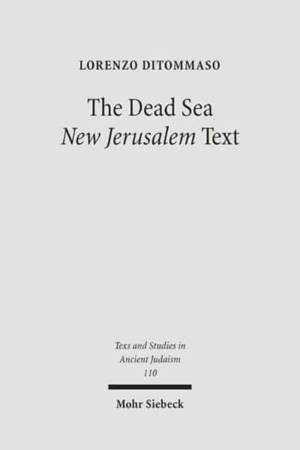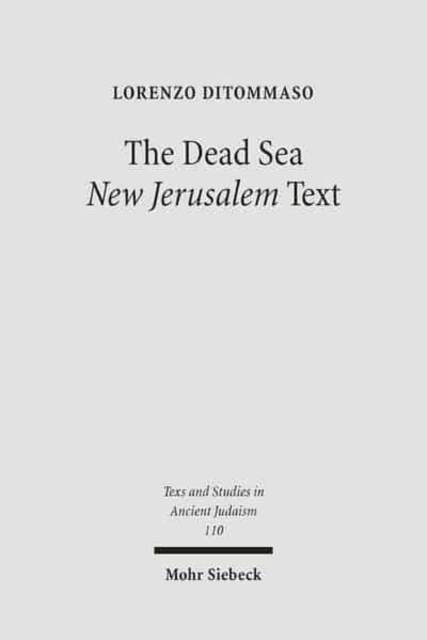
Door een staking bij bpost kan je online bestelling op dit moment iets langer onderweg zijn dan voorzien. Dringend iets nodig? Onze winkels ontvangen jou met open armen!
- Afhalen na 1 uur in een winkel met voorraad
- Gratis thuislevering in België vanaf € 30
- Ruim aanbod met 7 miljoen producten
Door een staking bij bpost kan je online bestelling op dit moment iets langer onderweg zijn dan voorzien. Dringend iets nodig? Onze winkels ontvangen jou met open armen!
- Afhalen na 1 uur in een winkel met voorraad
- Gratis thuislevering in België vanaf € 30
- Ruim aanbod met 7 miljoen producten
Zoeken
The Dead Sea 'New Jerusalem' Text
Contents and Contexts
Lorenzo Ditommaso
Hardcover | Engels | Texte und Studien zum Antiken Judentum / Texts and Studies in Ancient Judaism TSAJ | nr. 110
€ 114,95
+ 229 punten
Omschrijving
This volume is the first study of the Aramaic Dead Sea New Jerusalem text conducted in light of the complete extent of the preserved manuscript copies and with full reference to previous reconstructions. In addition to presenting an edition of the Cave Four copies (4Q554, 4Q554a, 4Q555), Lorenzo DiTommaso discusses the genre of the NJ, the order of its material, and its antecedents and parallels in ancient urban design. He suggests that its New Jerusalem is not a heavenly city and that categories of earthly and heavenly Jerusalems perhaps impose an inappropriate taxonomy on the various ancient Jewish and Christian expressions of the New Jerusalem. The author demonstrates that the NJ shares virtually no points of contact with the Temple Scroll, and that neither text is likely dependent on the other. He also argues that the New Jerusalem of the NJ is neither an eschatological focus of pilgrimage nor a mustering point for the final battle, that the text's eschatological horizon is established by a review of history and anticipates a time when once-hostile nations are humbled, and that it was conceivably composed in the first third of the second century BCE, shortly before the Maccabean revolt.
Specificaties
Betrokkenen
- Auteur(s):
- Uitgeverij:
Inhoud
- Aantal bladzijden:
- 228
- Taal:
- Engels
- Reeks:
- Reeksnummer:
- nr. 110
Eigenschappen
- Productcode (EAN):
- 9783161487996
- Verschijningsdatum:
- 31/12/2005
- Uitvoering:
- Hardcover
- Formaat:
- Genaaid
- Afmetingen:
- 153 mm x 229 mm
- Gewicht:
- 820 g

Alleen bij Standaard Boekhandel
+ 229 punten op je klantenkaart van Standaard Boekhandel
Beoordelingen
We publiceren alleen reviews die voldoen aan de voorwaarden voor reviews. Bekijk onze voorwaarden voor reviews.











